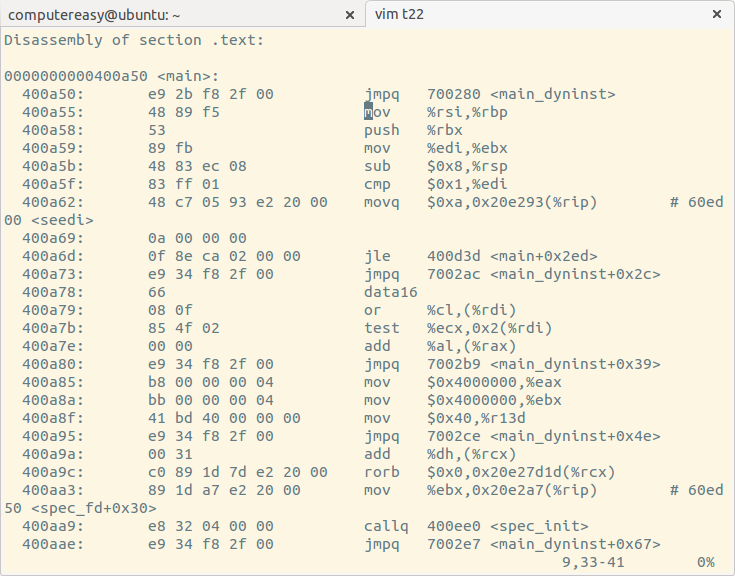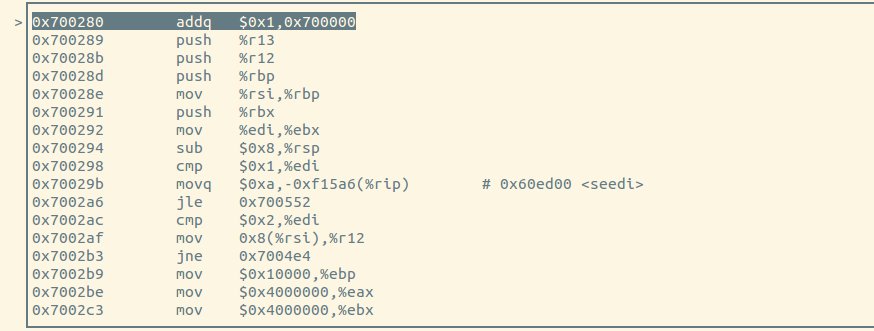Mailing List ArchivesAuthenticated access |
![[Computer Systems Lab]](http://www.cs.wisc.edu/pics/csl_logo.gif)
|
| Date: | Sun, 23 Aug 2015 05:17:23 -0000 |
|---|---|
| From: | Shuai Wang <wangshuai901@xxxxxxxxx> |
| Subject: | Re: [DynInst_API:] A question about dynInst's static instrumentation ability |
|
Hello Xiaozhu, Thank you a lot for your response. I double-checked the gdb output, and I suppose only one piece of instrumentation code is indeed executed. In particular, even tough basic blocks are instrumented like this (please see the jmpqÂinstructions):  But actually in the gdb debugging code only on one "addq" instruction is indeed inserted..  Am I missed anything..? BTW: How can you indeed put all the instrumentation code and original together in one section? IMHO, as you don't have the relocation information in the disassembled output, you actually cannot directly "inlineâ instrumentation code into the original code.. Could you please elaborate a little bit? Thank you a lot for response. Sincerely, Shuai On Sun, Aug 23, 2015 at 1:05 AM, Xiaozhu Meng <mxz297@xxxxxxxxx> wrote: Hi Shuai, |
| [← Prev in Thread] | Current Thread | [Next in Thread→] |
|---|---|---|
| ||
| Previous by Date: | Re: [DynInst_API:] Patching every basic block of a given elf binary, Xiaozhu Meng |
|---|---|
| Next by Date: | Re: [DynInst_API:] A question about dynInst's static instrumentation ability, Shuai Wang |
| Previous by Thread: | Re: [DynInst_API:] A question about dynInst's static instrumentation ability, Xiaozhu Meng |
| Next by Thread: | Re: [DynInst_API:] A question about dynInst's static instrumentation ability, Shuai Wang |
| Indexes: | [Date] [Thread] |